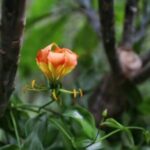Many people around the world still have misunderstandings about life in Zimbabwe, despite the country being rich in culture, modern cities, and a growing online presence. This post highlights and explains the most common misconceptions about Zimbabwe, especially from a Shona cultural perspective.
Misconception #1: Zimbabwe Is All About Wild Animals
One of the biggest myths is that Zimbabwe is just full of wild animals. Many foreign visitors expect to see wildlife everywhere—on the streets, in towns, or even near people’s homes. This idea is far from the truth.
In reality, wild animals live in national parks, game reserves, and zoos, not in cities or towns. Zimbabwe has a modern transport system, tall buildings, and urban infrastructure—just like other countries.
I remember a personal story from when I joined a cultural exchange programme abroad. During a visit to a local school, some students asked me how Zimbabweans live “side by side” with animals. I was surprised, but I realized their question came from a place of curiosity, not ignorance. They simply didn’t know any better—and that’s exactly why we need to share real stories about life in Zimbabwe.
Social Media Is Changing the Narrative
Thanks to platforms like TikTok, Instagram, and Facebook, more people are now seeing what life in Zimbabwe really looks like. These glimpses into daily life help correct the false image that the country is all wildlife and no civilization.
People now realise that Zimbabwe is not what is shown in outdated news reports or documentaries. There’s urban life, modern homes, entertainment, and a strong sense of culture and community.

What streets in Harare look like
Misconception #2: All Africans Are the Same
Another misconception is that all African people are the same. Africa is a continent, not a country. Just like Europe or Asia, each country in Africa has its own cultures, languages, and traditions.
Zimbabwe is home to different ethnic groups, and one of the largest is the Shona people, who have rich customs, traditions, and ways of life. Assuming all Africans live the same way shows a lack of awareness.
Misconception #3: Zimbabweans Live in Huts
While some traditional homes still exist, especially in rural areas, many Zimbabweans live in modern houses. In fact, people often have two homes—one in the city and one in the countryside. This dual lifestyle is a legacy of Zimbabwe’s history and economy.
Today, even in rural areas, you’ll find beautiful homes built with modern materials—some even look like resorts. The image of people living only in mud huts is outdated and inaccurate.
Misconception #4: Zimbabweans Live With Wild Animals
This is a big myth. People do not live with wild animals in their homes or backyards. Zimbabweans love their wildlife, but it is well-managed and protected in specific conservation areas.
These protected areas also bring economic value to the country through tourism, employment, and conservation efforts.
Misconception #5: All Africans Are Poor, Sick, or Starving
This harmful stereotype is often shown in the media. While Zimbabwe, like many other countries, faces challenges, it’s not defined by poverty or disease.
Yes, Zimbabwe has had its share of economic and health struggles, but it’s also a country full of hardworking people, innovation, and growth. Diseases happen everywhere—not just in Africa. What matters most is how a country prepares and responds.
The Real Zimbabwe: More Than What You’ve Heard
Zimbabwe is more than what you see on TV or read in headlines. To understand it, you need to experience it yourself. Whether it’s the buzzing city of Harare, the cultural richness of Shona traditions, or the peaceful life in the countryside, Zimbabwe has many stories to tell.
There are many Zimbabweans living abroad, but they stay connected to their roots. Zimbabwe is home—and identity matters. Your children or grandchildren may one day ask, “Where are we originally from?” What will you tell them?
Final Thoughts: Why You Should Explore Zimbabwe For Yourself
. Don’t believe everything you read or hear.
. Use social media, real stories, and personal travel experiences to learn.
. If you get the chance, visit Zimbabwe and see the beauty, culture, and people for yourself.
. Ask questions, do research, and always stay open-minded.
Hopefully, this post helped you understand more about living in Zimbabwe and cleared up some of the most common myths and misconceptions.
If you have any questions or would like to share your own experiences, leave a comment below—I’d love to hear from you!





I enjoyed reading this post and it has opened my eyes about the world’s perspective about Zimbabwe.
I agree with you things have changed now. More people can easily access information about Zimbabwe.
Hi, Memory, thank you for taking your time and leaving some encouraging feedback. Thank you so much.
Hello! I hope you’re having a great day. Good luck 🙂
Thank you so much. All the best to you too.
Hey, thanks so much. Hopefully, you have a great day too.